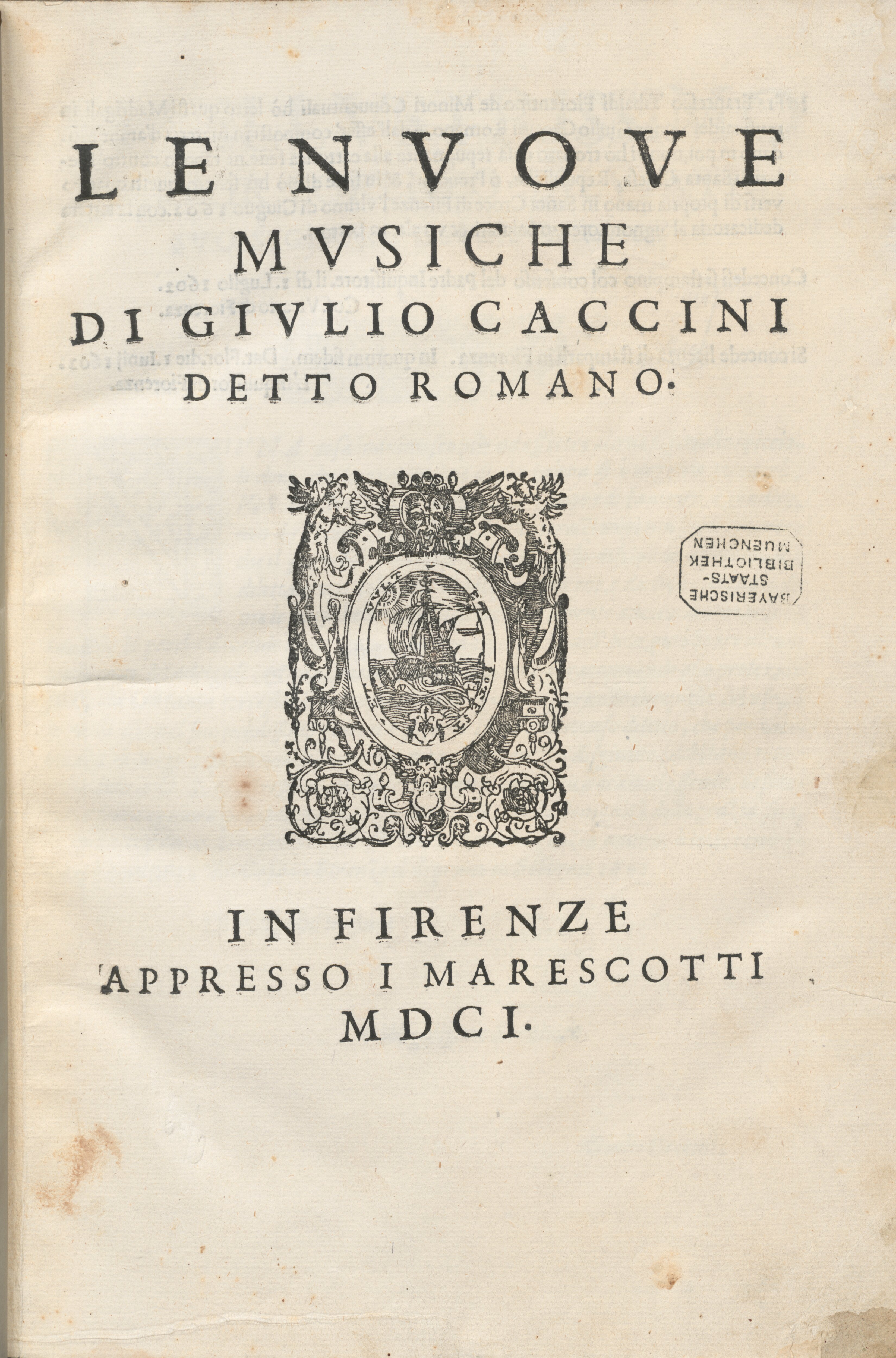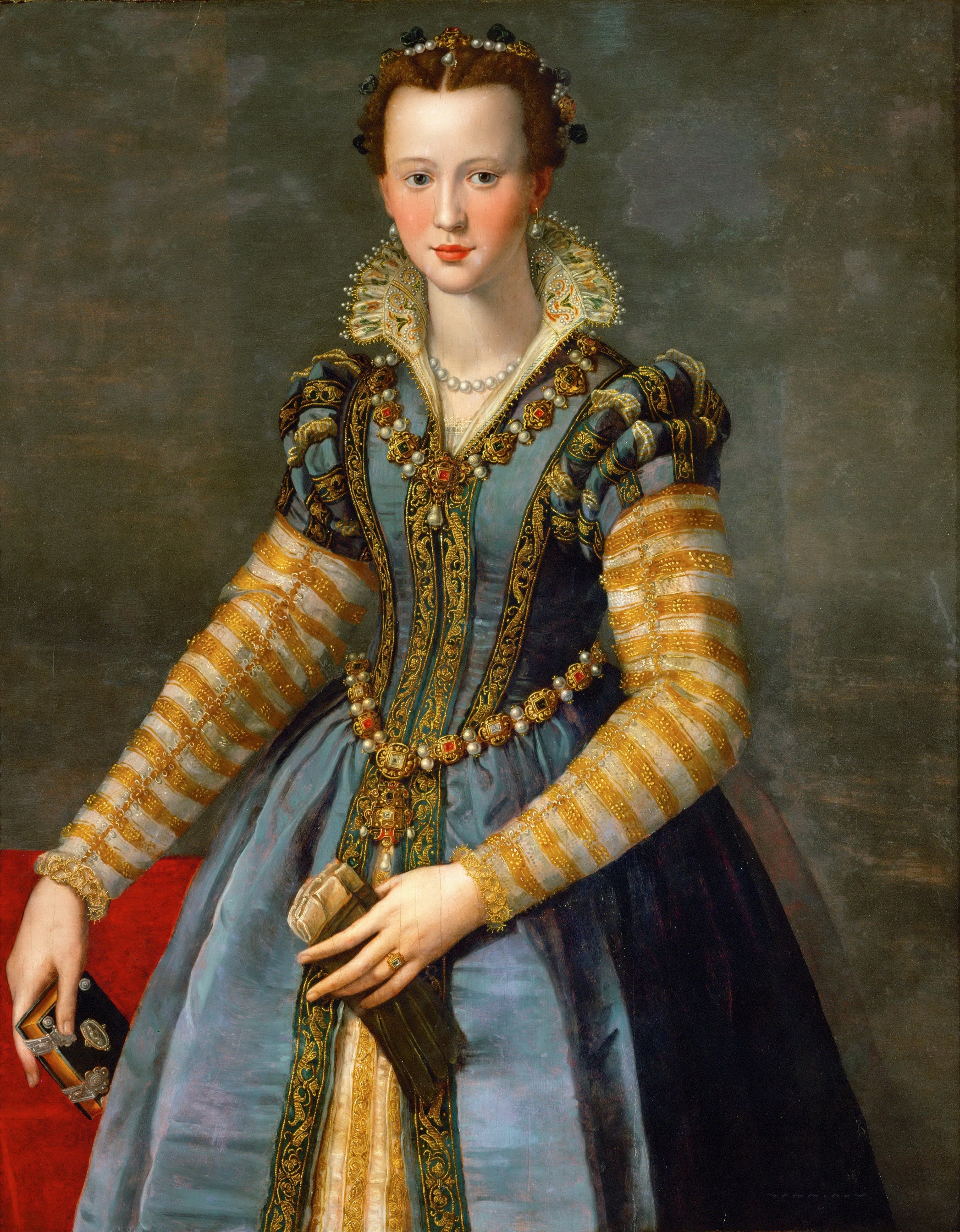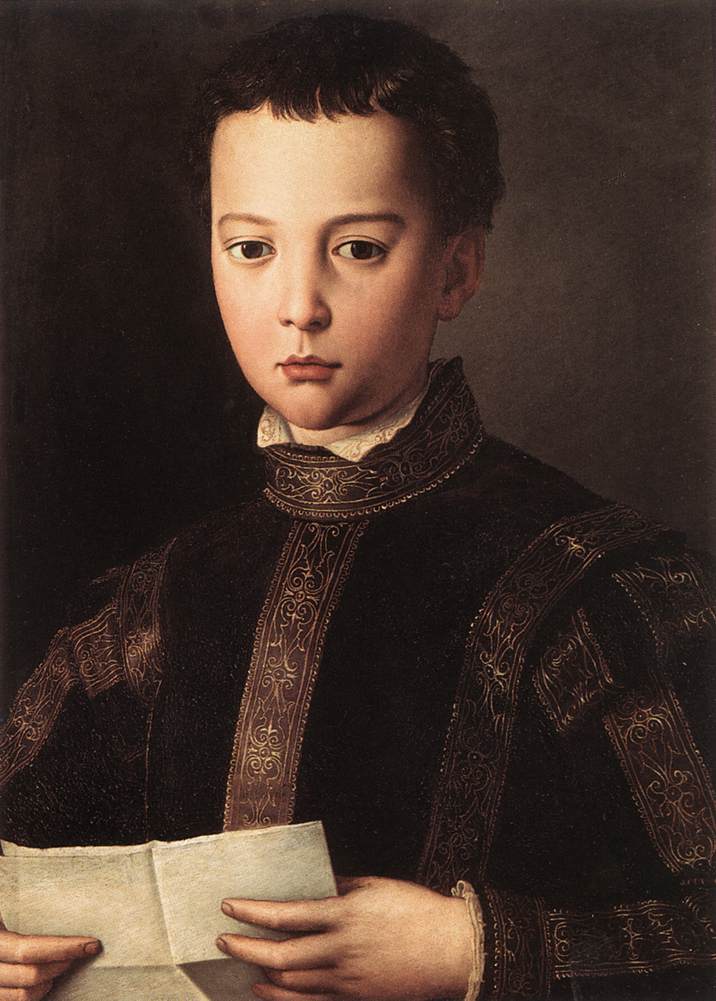|
Giulio Caccini
Giulio Romolo Caccini (also Giulio Romano) (8 October 1551 – buried 10 December 1618) was an Italian composer, teacher, singer, instrumentalist and writer of the late Renaissance and early Baroque eras. He was one of the founders of the genre of opera, and one of the most influential creators of the new Baroque style. He was also the father of the composer Francesca Caccini and the singer Settimia Caccini. Life Little is known about his early life, but he is thought to have been born in Rome, the son of the carpenter Michelangelo Caccini; he was the older brother of the Florentine sculptor Giovanni Caccini. In Rome he studied the lute, the viol and the harp, and began to acquire a reputation as a singer. In the 1560s, Francesco de' Medici, Grand Duke of Tuscany, was so impressed with his talent that he took the young Caccini to Florence for further study. By 1579, Caccini was singing at the Medici court. He was a tenor, and he was able to accompany himself on the viol or ... [...More Info...] [...Related Items...] OR: [Wikipedia] [Google] [Baidu] |
Caccini - Le Nuove Musiche
Caccini is the name of several composers and artists from Florence: * Giulio Caccini (1551–1618), Florentine composer, significant innovator of the early Baroque era * Francesca Caccini (1587–1641?), Giulio's daughter, and a well-known opera composer in the early 17th century * Settimia Caccini (1591–1638?) Giulio's daughter, a singer and occasional composer * Giovanni Battista Caccini (1556 – c.1612/14), Florentine Mannerist sculptor * Tommaso Caccini (1574–1648), Dominican friar who denounced Galileo from the pulpit {{surname, Caccini Italian-language surnames ... [...More Info...] [...Related Items...] OR: [Wikipedia] [Google] [Baidu] |
Florentine Camerata
The Florentine Camerata, also known as the Camerata de' Bardi, were a group of humanists, musicians, poets and intellectuals in late Renaissance Florence who gathered under the patronage of Count Giovanni de' Bardi to discuss and guide trends in the arts, especially music and drama. They met at the house of Giovanni de' Bardi, and their gatherings had the reputation of having all the most famous men of Florence as frequent guests. After first meeting in 1573, the activity of the Camerata reached its height between 1577 and 1582. While propounding a revival of the Greek dramatic style, the Camerata's musical experiments led to the development of the '' stile recitativo''. In this way it facilitated the composition of dramatic music and the development of opera. Membership The term ''camerata'' is entirely a new construct coined by the members of Bardi's circle, although apparently based on the Italian word for "chamber", ''camera'', a term used for a room where important meetings we ... [...More Info...] [...Related Items...] OR: [Wikipedia] [Google] [Baidu] |
Pietro De' Medici
Don Pietro de' Medici (3 June 1554 – 25 April 1604) was the youngest son of Cosimo I de' Medici, Grand Duke of Tuscany and Eleonora di Toledo. Early in 1571 he went to Rome and in the spring of 1575 he went to Venice. In 1571 he married his first cousin Eleonora di Garzia di Toledo, whom he accused of adultery and strangled with a dog leash in July 1576 at the Villa Medici at Cafaggiolo. He also had her supposed lover Bernardino Antinori imprisoned and killed. At the end of 1577, he went for the first of many stays at the Spanish court. He remained in Spain until the end of 1578. During this visit he gained a reputation as a spendthrift and a rake. He left Tuscany in October 1579 to bring Italian troops to Spain and lead them during the mission to Portugal. He stayed in Lisbon until the end of 1582 when he returned to Spain where his presence is documented in 1583 and 1584. His correspondence proves that he had serious money problems. He came to Italy in July 1584 to ask his ... [...More Info...] [...Related Items...] OR: [Wikipedia] [Google] [Baidu] |
Eleonora Di Garzia Di Toledo
Eleonora di Garzia di Toledo or Leonor Álvarez de Toledo Osorio (March 1553 – 10 July 1576), more often known as "Leonora" or "Dianora", was the daughter of García Álvarez de Toledo, 4th Marquis of Villafranca, Duke of Fernandina. Leonora was born in Florence, where she was brought up by Cosimo I de' Medici, Grand Duke of Tuscany and his wife Eleanor of Toledo, her aunt and namesake. Betrothed to their son Pietro at the age of 15, she blossomed under the wing of Pietro's older sister, the artistic patron Isabella, into a vivacious and witty beauty. Her marriage, like Isabella's, was not a success, and she followed her mentor's example of taking lovers. For this reason, Pietro had her brought in 1576 to the country retreat of Cafaggiolo, where he strangled her to death with a dog leash. Cosimo's successor, Francesco I, tacitly approved the murder, and Pietro was never brought to justice for it. Until recently, little was known of Leonora di Garzia di Toledo, and she wa ... [...More Info...] [...Related Items...] OR: [Wikipedia] [Google] [Baidu] |
Francesco I De' Medici
Francesco I (25 March 1541 – 19 October 1587) was the second Grand Duke of Tuscany, ruling from 1574 until his death in 1587. He was a member of the House of Medici. Biography Born in Florence, Francesco was the son of Cosimo I de' Medici, Grand Duke of Tuscany, and Eleanor of Toledo. He served as regent for his father Cosimo after he retired from his governing duties in 1564. Marriage to Joanna of Austria On 18 December 1565, Francesco married Joanna of Austria, youngest daughter of Holy Roman Emperor Ferdinand I and his wife Anne of Bohemia and Hungary. By all reports, it was not a happy marriage. Joanna was homesick for her native Austria, and Francesco was neither charming nor faithful. In 1578, Joanna died at the age of thirty-one, after falling down a flight of stairs while pregnant with their eighth child. Bianca Cappello Soon after Grand Duchess Joanna had died, Francesco went on to marry his Venetian mistress, Bianca Cappello, after aptly disposing of her ... [...More Info...] [...Related Items...] OR: [Wikipedia] [Google] [Baidu] |
Roman School
In music history, the Roman School was a group of composers of predominantly church music, in Rome, during the 16th and 17th centuries, therefore spanning the late Renaissance and early Baroque eras. The term also refers to the music they produced. Many of the composers had a direct connection to the Vatican and the papal chapel, though they worked at several churches; stylistically they are often contrasted with the Venetian School of composers, a concurrent movement which was much more progressive. By far the most famous composer of the Roman School is Giovanni Pierluigi da Palestrina, whose name has been associated for four hundred years with smooth, clear, polyphonic perfection. However, there were other composers working in Rome, and in a variety of styles and forms. History and characteristics While composers had almost certainly been working in Rome continuously for the thousand years since the time of Gregory the Great, the development of a consistent style around th ... [...More Info...] [...Related Items...] OR: [Wikipedia] [Google] [Baidu] |
Giovanni Pierluigi Da Palestrina
Giovanni Pierluigi da Palestrina ( – 2 February 1594) was an Italian composer of late Renaissance music. The central representative of the Roman School, with Orlande de Lassus and Tomás Luis de Victoria, Palestrina is considered the leading composer of late 16th-century Europe. Primarily known for his masses and motets, which number over 105 and 250 respectively, Palestrina had a long-lasting influence on the development of church and secular music in Europe, especially on the development of counterpoint. According to '' Grove Music Online'', Palestrina's "success in reconciling the functional and aesthetic aims of Catholic church music in the post-Tridentine period earned him an enduring reputation as the ideal Catholic composer, as well as giving his style (or, more precisely, later generations’ selective view of it) an iconic stature as a model of perfect achievement." Biography Palestrina was born in the town of Palestrina, near Rome, then part of the Papal States to N ... [...More Info...] [...Related Items...] OR: [Wikipedia] [Google] [Baidu] |
L'Orfeo
''L'Orfeo'' ( SV 318) (), sometimes called ''La favola d'Orfeo'' , is a late Renaissance/early Baroque ''favola in musica'', or opera, by Claudio Monteverdi, with a libretto by Alessandro Striggio. It is based on the Greek legend of Orpheus, and tells the story of his descent to Hades and his fruitless attempt to bring his dead bride Eurydice back to the living world. It was written in 1607 for a court performance during the annual Carnival at Mantua. While Jacopo Peri's ''Dafne'' is generally recognised as the first work in the opera genre, and the earliest surviving opera is Peri's '' Euridice'', ''L'Orfeo'' is the earliest that is still regularly performed. By the early 17th century the traditional intermedio—a musical sequence between the acts of a straight play—was evolving into the form of a complete musical drama or "opera". Monteverdi's ''L'Orfeo'' moved this process out of its experimental era and provided the first fully developed example of the new genre. After i ... [...More Info...] [...Related Items...] OR: [Wikipedia] [Google] [Baidu] |
Monteverdi
Claudio Giovanni Antonio Monteverdi (baptized 15 May 1567 – 29 November 1643) was an Italian composer, choirmaster and string player. A composer of both secular and sacred music, and a pioneer in the development of opera, he is considered a crucial transitional figure between the Renaissance and Baroque periods of music history. Born in Cremona, where he undertook his first musical studies and compositions, Monteverdi developed his career first at the court of Mantua () and then until his death in the Republic of Venice where he was ''maestro di cappella'' at the basilica of San Marco. His surviving letters give insight into the life of a professional musician in Italy of the period, including problems of income, patronage and politics. Much of Monteverdi's output, including many stage works, has been lost. His surviving music includes nine books of madrigals, large-scale religious works, such as his ''Vespro della Beata Vergine'' (''Vespers for the Blessed Virgin'') of ... [...More Info...] [...Related Items...] OR: [Wikipedia] [Google] [Baidu] |
Giovanni Gualberto Magli
Giovanni Gualberto Magli was an Italian castrato who had an active singing career during the first quarter of the 17th century. Born in Florence, he studied voice with Giulio Caccini before becoming a musician for the House of Medici on 23 August 1604. He participated in the world premiere of Claudio Monteverdi's ''L'Orfeo'' in 1607 at the court of Prince Francesco IV Gonzaga, Duke of Mantua, portraying the roles of La Musica and Proserpina and possibly one other part. The musicologist and historian Hans Redlich mistakenly allocates Magli to the role of Orfeo. In 1608 he sang for the wedding festivities of Cosimo II de' Medici, Grand Duke of Tuscany and Archduchess Maria Maddalena of Austria. In October 1611 he was granted two years paid leave by Antonio de' Medici to pursue further studies in Naples. He left Medici service in 1615 to join the musicians at the court of John Sigismund, Elector of Brandenburg John Sigismund (german: Johann Sigismund; 8 November 1572 – 23 Decembe ... [...More Info...] [...Related Items...] OR: [Wikipedia] [Google] [Baidu] |
Polyphony
Polyphony ( ) is a type of musical texture consisting of two or more simultaneous lines of independent melody, as opposed to a musical texture with just one voice, monophony, or a texture with one dominant melodic voice accompanied by chords, homophony. Within the context of the Western musical tradition, the term ''polyphony'' is usually used to refer to music of the late Middle Ages and Renaissance. Baroque forms such as fugue, which might be called polyphonic, are usually described instead as contrapuntal. Also, as opposed to the ''species'' terminology of counterpoint, polyphony was generally either "pitch-against-pitch" / "point-against-point" or "sustained-pitch" in one part with melismas of varying lengths in another. In all cases the conception was probably what Margaret Bent (1999) calls "dyadic counterpoint", with each part being written generally against one other part, with all parts modified if needed in the end. This point-against-point conception is opposed to " ... [...More Info...] [...Related Items...] OR: [Wikipedia] [Google] [Baidu] |
Harmony
In music, harmony is the process by which individual sounds are joined together or composed into whole units or compositions. Often, the term harmony refers to simultaneously occurring frequencies, pitches ( tones, notes), or chords. However, harmony is generally understood to involve both vertical harmony (chords) and horizontal harmony ( melody). Harmony is a perceptual property of music, and, along with melody, one of the building blocks of Western music. Its perception is based on consonance, a concept whose definition has changed various times throughout Western music. In a physiological approach, consonance is a continuous variable. Consonant pitch relationships are described as sounding more pleasant, euphonious, and beautiful than dissonant relationships which sound unpleasant, discordant, or rough. The study of harmony involves chords and their construction and chord progressions and the principles of connection that govern them. Counterpoint, which refers to ... [...More Info...] [...Related Items...] OR: [Wikipedia] [Google] [Baidu] |







.jpg)
